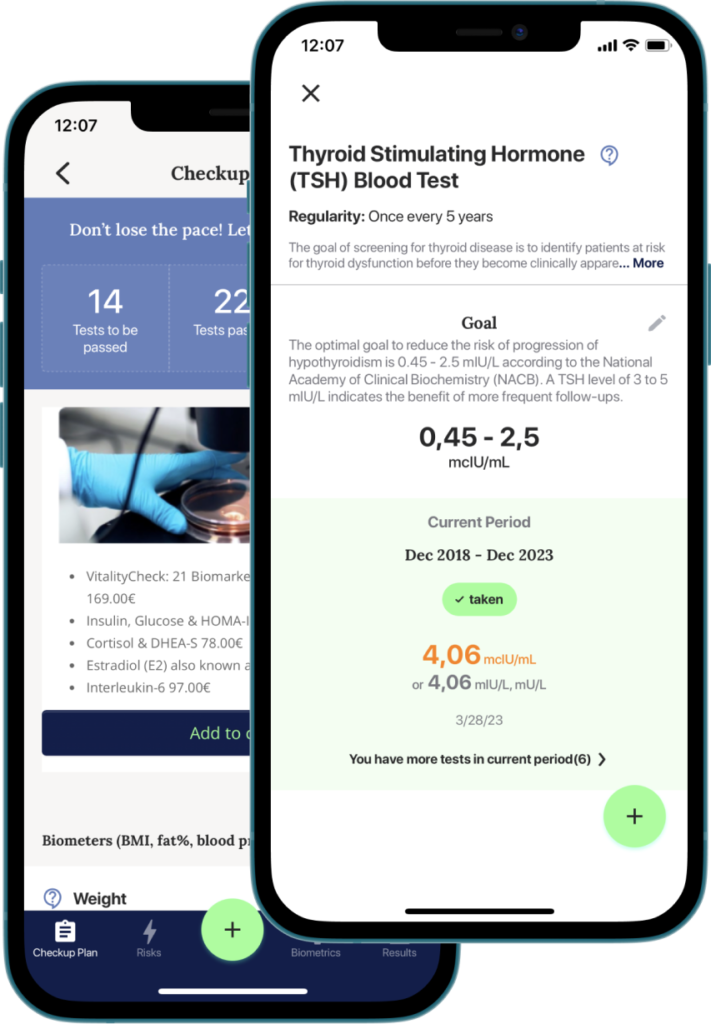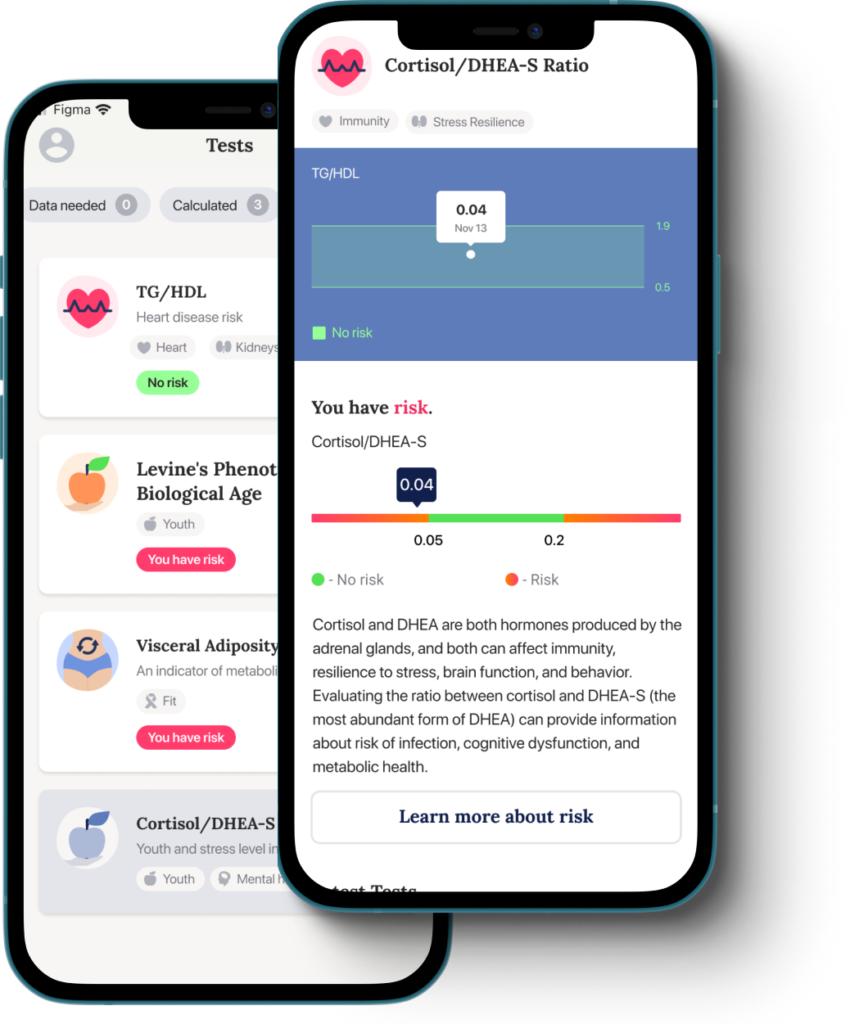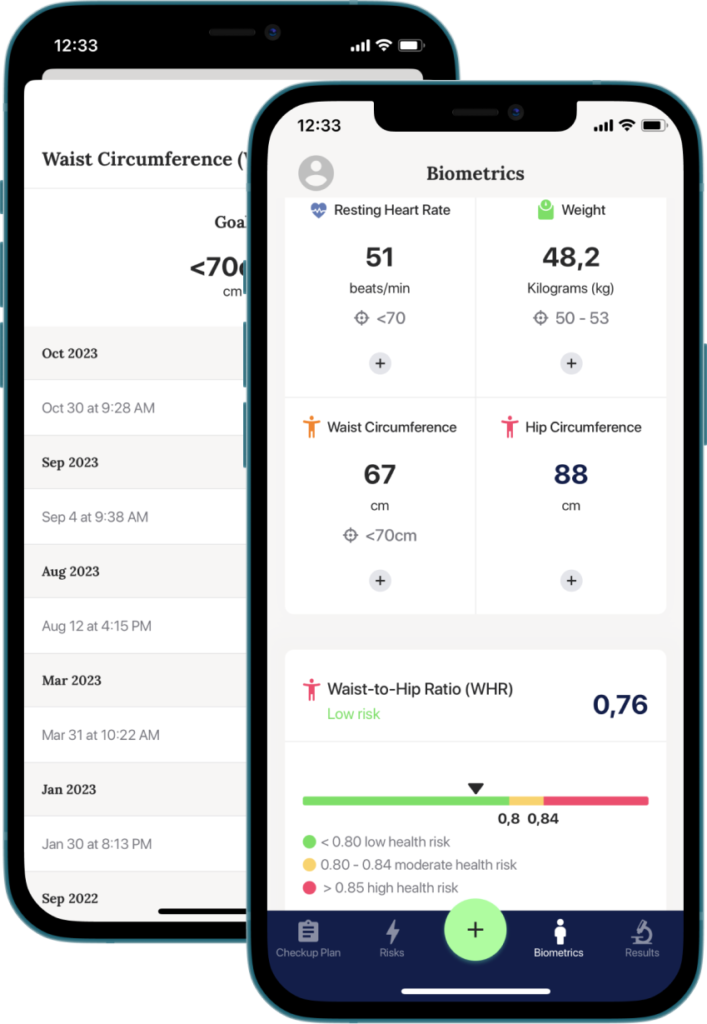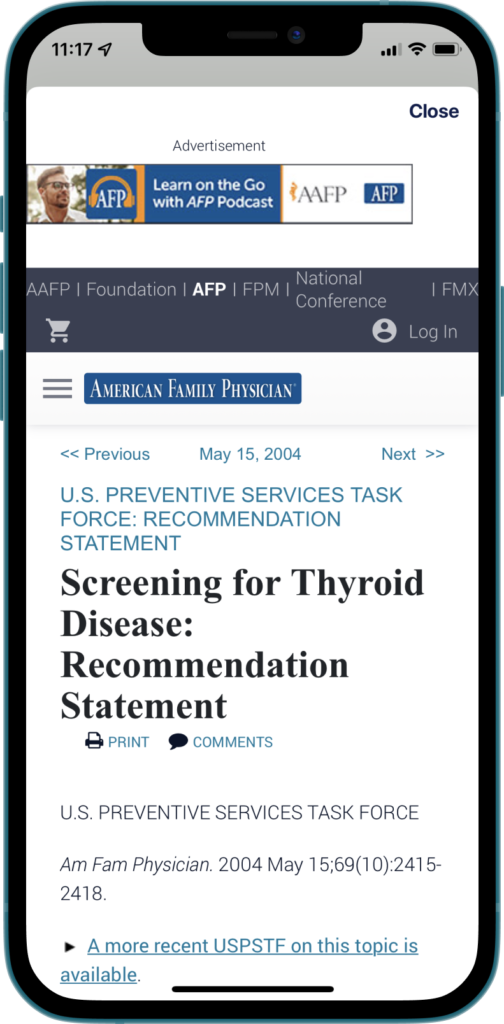Often, we encounter difficulties in obtaining a comprehensive medical history from hospitals – including analyses, imaging, and treatment information. Electronic health records, prevalent worldwide, often prove ineffective for patients due to data management complexities and the presentation of research findings in conventional lab reports. Recently, new solutions have emerged that provide patients with not only data but also valuable resources. However, given access to such a volume of patient data, why not analyze it? Research conducted by various physicians using diverse calculators and algorithms on electronic health records can significantly benefit patient health preservation. Let’s take a look at the example of the Healsens electronic health record – how it processes patient data to calculate health risks and the functionalities employed to achieve these objectives within the context of mobile health apps.
Healsens is designed to gather preventive medicine outcomes and implement them into personalized recommendations. One of its key objectives is assessing health risks, validating them through medical research, and providing preventive care. For individuals, this means having a solution at their fingertips capable of aiding in disease prevention. For physicians, it involves evaluating the risks faced by their patients. Let’s explore together the tools utilized by Healsens: risk calculators, screening plans, analysis of biometric data, tracking medical history, and lifestyle change recommendations. These components collectively elucidate how Healsens operates.
Health Plan and Health Screenings
The foundation of a preventive approach relies on two main pillars – health screenings and health risk assessments. Your health plan serves as your guide, continually adapting to changes occurring within your body. The main screen of Healsens immediately presents your personalized health plan, unique to each individual. It, much like you, evolves to track changes and respond promptly. If you’re young and healthy, your plan will be concise. As you age, it expands, considering potential bodily changes.
Initiated your plan? Explore its contents. Here, blood tests, at-home parameter measurements, health screenings, and questionnaires provide a comprehensive health assessment. Blood tests offer insights into your body, while questionnaires gauge your emotional well-being. These tools are recommended for self-diagnosis. For each examination, whether blood tests, MRI, CT scans, or ultrasound, you’ll discover:
- Reasons for undergoing the examination.
- Medical organizations’ recommendations regarding screenings
- Optimal goals for achievement.
IN THIS ARTICLE
3
Storage and Analysis of Data in Healsens Electronic Cards
- Mobile Health Apps: Healsens
- Empowering Health Monitoring: Utilizing Mobile Apps for Personal Biometric Analysis
5
RELATED ARTICLES
Upon the initial creation of the plan, it takes into account your age and gender, assuming your overall health. However, as new data becomes available, the plan becomes more personalized. Depending on changes, various analyses or health screenings may be suggested to you, and the app will notify you about the reasons for these changes.
The more diverse health factors are known, the better the electronic health record can tailor an individual screening list to maximize health preservation. This encapsulates the essence of a smart electronic medical record and the Healsens mobile app. Preventive medicine is increasingly becoming personalized, hence some screenings are recommended specifically for individuals in at-risk categories. Thus, some screenings may be proposed to you only after an assessment of health risks.
It’s worth noting that such a personalized approach not only saves money but also aids in better health issue diagnosis. Consider the facts: according to survey data, in 2018, over 65% of Europeans visited a doctor for preventive check-ups and tests. However, only 17% included age-related screenings, which are a primary cause of early mortality and disability worldwide.

Assessing your health condition and disease development risks
Assessing health status and risk calculators are the second crucial aspect in maintaining health. Numerous organizations develop their risk calculators, curate lists of risk factors, and collaborate with scientific entities to identify individuals at risk. The primary goal is disease prevention. It’s important to note that most chronic conditions are more effectively treated at early stages, making treatment more efficient, accessible, and usually resulting in fewer complications. For instance, prediabetes is considered a reversible condition, while unfortunately, diabetes remains incurable.
Within the Healsens app, the risk assessment process is complemented by a unique approach. Risk calculators, found in the “Risks” section, integrate data from your health plan, considering analysis results and other parameters. As you progress through the health plan, you automatically assess your risks. However, these calculators also consider the user’s profile, displaying only relevant risks.
Examples of such individualized approaches can vary. For instance, the cardiovascular risk calculator SCORE 2 is not optimal for individuals under 40 and is specifically designed for European continent residents. This specificity is detailed in the article “Assessment of Cardiovascular Risk.” Users under 40 or residing outside the SCORE 2 assessment zone will not see this calculator.

Storage and Analysis of Data in Healsens Electronic Cards
Mobile Health Apps: Healsens
The Healsens mobile app for electronic medical cards stands out as an exemplary suite of mobile health apps, enabling users to upload and monitor their own medical data. It isn’t tied to a specific clinic, doctor, or country, offering versatility for users globally. The card system is user-friendly: individuals from any part of the world can input their data, tailor it to their needs, and then track its dynamics. However, this approach comes with one drawback: the necessity for manual input of results. Yet, for some countries, medical history synchronizes automatically, which is undoubtedly convenient.
Every laboratory test and medical examination represented in numerical format can be visualized as graphs. In addition to standard values provided by laboratories, users have the option to set personal targets to assess the effectiveness of treatment and the pace of achieving optimal indicators. Within the app, laboratory references and user-set targets are displayed as two distinct entities. Why is this so?
Laboratories establish reference values, considering, among other factors, the accuracy of their equipment. This leads to different reference values set by different labs, accounting for their individual margins of error. It makes sense to preserve these ranges. The set targets for analyses in Healsens represent a more personalized reference, considering individual characteristics. Thus, both laboratory references and set targets are always accessible. Let’s delve a bit into the practicality of setting goals.
Alongside the health plan, users receive set targets for most analyses included in the plan. This is done to notify when a particular indicator is in the ‘risk’ zone. Healsens’ targets are generally narrower than laboratory references and can account for user risks. The app always provides reasoning behind the set targets (see screenshot on the right). Furthermore, users have the option to set their own goals. This allows users to customize indicators to their specific needs. Consider an instance where this becomes highly relevant: suppose a user has a congenital condition – Gilbert’s syndrome, where their bilirubin levels are higher than usual and are considered normal for them. By setting ‘individual targets’ for bilirubin, the user can monitor their personal reference norms and react only if they exceed those norms. Additionally, we regularly publish articles to provide detailed information about diagnostics and treatment options.
Empowering Health Monitoring: Utilizing Mobile Apps for Personal Biometric Analysis

Mobile health apps like Healsens offer a platform not just for medical research but also for inputting home measurement history, including blood pressure, weight, pulse, waist size, and other biometric data. Each of these data points plays a crucial role in assessing one’s body condition. Moreover, some metrics come with their own risk assessments.
For instance, waist circumference is a pivotal factor in the onset of metabolic syndrome, a precursor to various cardiovascular diseases. Meanwhile, the waist-to-hip ratio serves to assess body composition, shedding light on fat distribution and its associated health implications.
Our goal is to prevent disease, and if the disease is progressing – to detect it as soon as possible.
Health Screening Sources
Healsens’ screening plans are beneficial not just for patients but also for physicians. As previously mentioned, Healsens accumulates recommendations from various healthcare organizations like USPSTF, TFHC, and others in preventive medicine. These recommendations are constantly updated, incorporating new models and risk factors. Having access to such a wealth of information is not always feasible for physicians to stay up-to-date with the latest screening recommendations.
That’s why we continuously track all changes in medical guidelines and provide links to methodical recommendations, enabling both physicians and their patients to quickly catch up with updates. This way, you’ll always be informed about the latest news on maintaining your health.
However, all this information is challenging to utilize without knowing how to interpret it. Hence, Healsens will send prompts and suggestions based on your data results. Additionally, we regularly publish articles to provide detailed insights into diagnostic methods and treatment options. With Healsens, you’ll have access to up-to-date recommendations, personalized tips, and informational materials to make informed decisions about your health and prevent the development of early diseases.

Follow us on Facebook|| Instagram || Telegram || Youtube
Surveys
Surveys represent another essential tool for understanding one’s health status. Perhaps you’ve encountered surveys on the website aimed at assessing overall health or anxiety levels. This data serves as a crucial supplement to health care. Firstly, assessing well-being and understanding mental health are closely linked to physical health. Chronic stress, for instance, can impact our bodies in various ways, requiring such tools for consideration. Furthermore, the Healsens app may request additional information about risk factors such as smoking to more accurately assess individual health risks.
One of Healsens’ advantages is the use of clinical tools widely applied in medical practice. The app also employs tools available for self-diagnosis. While these tools don’t replace visits to specialists, they complement understanding one’s condition and risks. These assessment tools are also reliable and well-known among doctors and specialists, facilitating communication with your physician and understanding your condition.
Monitoring Well-being and Health Diaries

At times, everyone might experience discomfort, ranging from headaches to insomnia. Regularly monitoring one’s health status through Healsens holds significant value. Imagine noticing changes in your well-being that seem minor but significant. Typically, we only consult a doctor when discomfort becomes significantly bothersome, making it hard to ignore. During doctor visits, providing detailed information about the nature and frequency of these sensations is often required for an accurate diagnosis. But what if you already have a detailed record of all these nuances? Healsens can help gather this information in advance. The app allows tracking health status, storing necessary data, and providing it to the doctor when needed.
Therefore, when you consult a doctor, you’ll already have a comprehensive record of how your conditions and symptoms have changed over time. This provides a more accurate picture of your health, expedites the diagnosis process, and enables more precise treatment based on a complete history of your observations.
Continuing to monitor your well-being throughout treatment is also crucial. It not only ensures the effectiveness of measures taken and allows for adjustments but also tracks how your body responds to therapy over time. A detailed view of health changes helps the doctor make more informed decisions, adjusting treatment based on the complete history of your observations. Consequently, this significantly enhances the healthcare process, elevating the therapy’s effectiveness by making it more personalized and tailored precisely to your needs.

